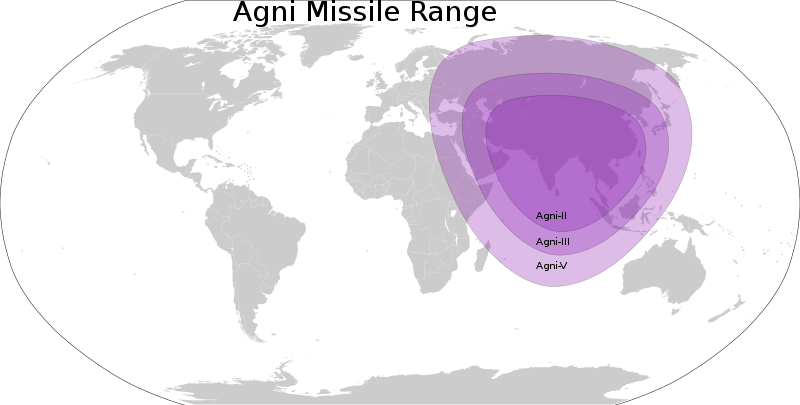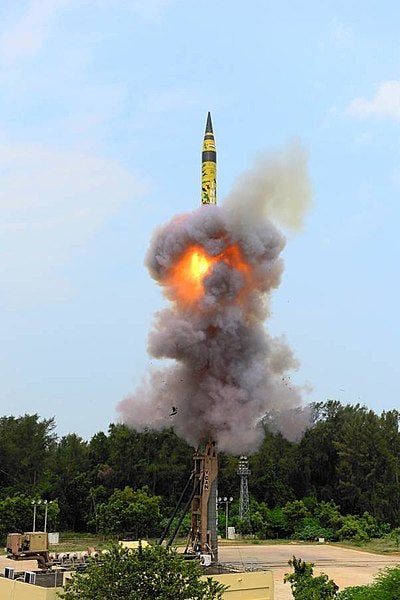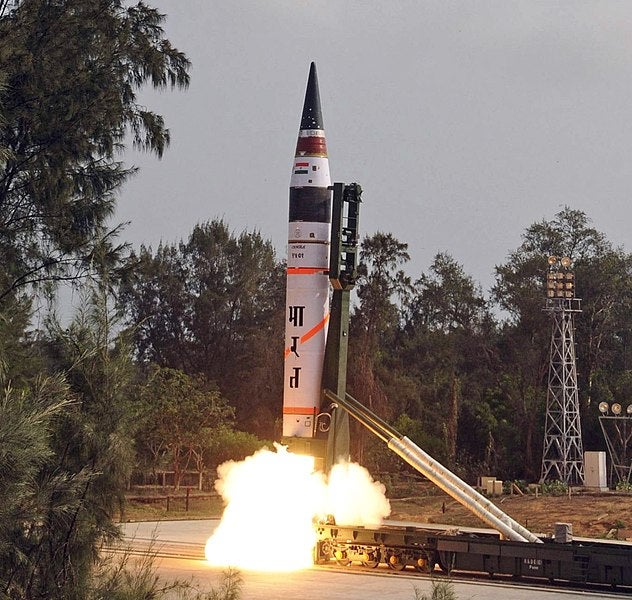India Successfully Tests The Nuclear-Capable Agni-V Ballistic Missile
The Indian Ministry of Defense announced that the surface-to-surface Agni-V Ballistic Missile was successfully tested from APJ Abdul Kalam Island in Odisha at 19:50 on Wednesday, October 27. “The successful test of Agni-V is in line with India’s stated policy to have credible minimum deterrence that underpins the commitment to ‘No First Use’,” the defence ministry said.
India’s successful test launch came after the eruption of an ongoing border dispute with China in eastern Ladakh and China testing a nuclear-capable hypersonic missile in August. The Chinese government is concerned about this since the Agni-V missile can reach all regions of mainland China. China had previously objected to India’s Agni-V missile test for this reason. The Chinese Ministry of Foreign Affairs’ spokesperson, Hua Chunying, stressed in a statement that India should not test the Agni-V intercontinental ballistic missile.
China cited UN Resolution 1172 as a reason why India should not test the intercontinental ballistic missile and asked India and Pakistan to put their nuclear weapons development programs on hold immediately. The Indian government, on the other hand, is continuing to conduct tests to improve its deterrent capability against China’s 12,000-15,000 km range missiles, such as the Dongfeng-41.

The Defense Research and Development Organization (DRDO) and Bharat Dynamics Limited, a government agency of India, collaborated on the Agni-V intercontinental ballistic missile. Agni-V was first tested on April 19, 2012, then again on September 15, 2013, then again on January 31, 2015, and on December 26, 2016. The fifth test took place on January 18, 2018, the sixth on June 3, 2018, and the seventh on December 10, 2018, and all trials were successful. In June 2021, India successfully tested the next generation Agni-P.
The Agni-V is more accurate and has a faster launch time than previous Agni missiles, such as the 700-kilometer-range Agni-I, the 2,000-kilometer-range Agni-II, the 2,500-kilometer-range Agni-III, and the 3,500-kilometer-range Agni-IV. In terms of warhead and engine, it is the most recent and advanced variant.

The Agni-V is a three-stage solid-fuel missile with a range of 5,500 to 5,800 kilometers. The missile is 17 meters long and weighs more than 50 tons, and it can carry a 1.5 ton nuclear warhead. The Agni-5 missile is equipped with Multiple Independent Re-entry Vehicle (MIRV) technology, which allows it to hit multiple targets at once. It can reach a top speed of 29401 kilometers per hour (18,269 mph). In one second, it can go 8.1 kilometers.
If the Agni-V ballistic missile passes all tests and is added to the inventory, India will join the ranks of countries with long-range ballistic missiles, including the United States, Russia, China, France, and the United Kingdom.

